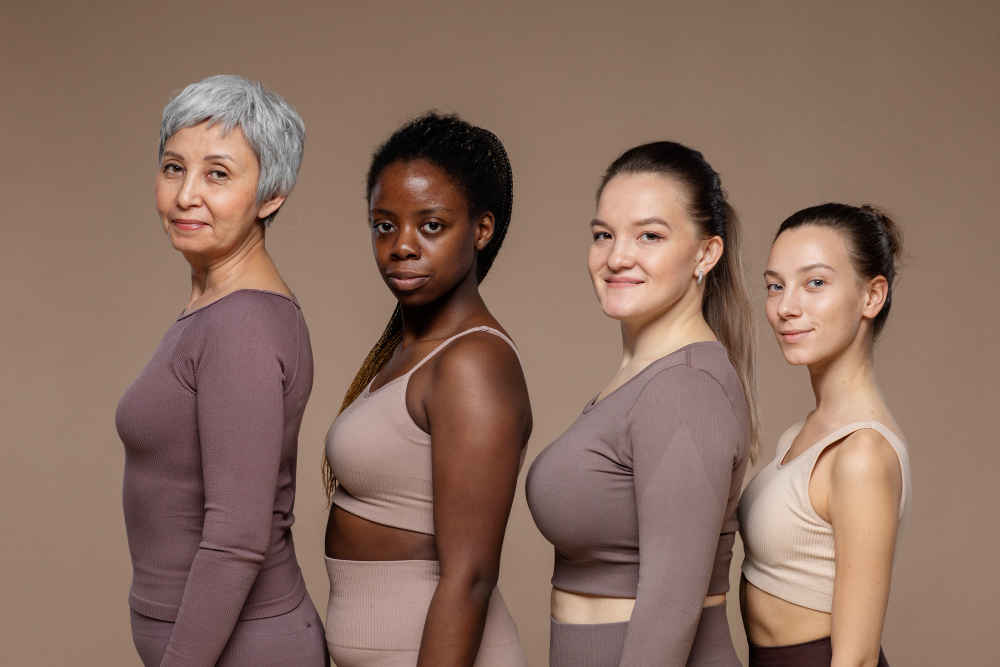Many women have breasts that are slightly different sizes or shapes. It is very common and normal to have some asymmetry between breasts. Slight differences are not usually a cause for concern. However, more noticeable asymmetry can sometimes indicate an underlying medical condition. Here are some of the most common reasons for significant breast asymmetry.
Differences During Puberty
It is common for breasts to develop at different rates during puberty. The breasts may differ in size, shape and timing of development. For example, one breast may start budding and growing before the other. These differences usually even out over time as the breasts continue to mature. However, if the asymmetry persists into adulthood, there may be another cause.
Pregnancy and Breastfeeding
Pregnancy, breastfeeding and weaning can all cause temporary changes in breast size and shape. Hormonal changes during pregnancy can make one breast larger than the other, especially in the first trimester. Breastfeeding can also cause asymmetry if one breast produces more milk than the other. The breast that is used more for nursing may become larger. However, when breastfeeding stops, the breasts usually return to similar sizes.
Injury or Surgery
Physical injury or surgery on one breast can lead to asymmetry. An injury may damage the breast tissue, causing scarring and shrinking of the breast. Previous breast surgery like a lumpectomy or mastectomy will likely result in differences between the breasts. Radiation therapy after breast cancer treatment can also affect breast size and shape on that side.
Medical Conditions
Certain medical conditions are associated with breast asymmetry:
- Breast cancer: A new breast lump or unusual changes to the breast can be a sign of breast cancer. Cancerous tumours often cause enlargement and dimpling of the breast.
- Fibrocystic breast disease: This benign condition causes lumpiness and cysts in the breasts, often making them uneven. It most commonly affects women aged 30-50.
- Tuberous breast deformity: This congenital condition causes underdevelopment of the breasts. One or both breasts may be small, elongated and cone-shaped.
- Polycystic ovary syndrome (PCOS): Hormonal imbalances in PCOS can cause uneven breast growth.
Seeing a Doctor
In most cases, slight breast asymmetry is normal. However, a doctor should evaluate any sudden, persistent or progressive differences between the breasts. A breast examination and imaging tests like mammograms or ultrasounds can check for any underlying problems. Based on the cause, treatment may include medication, breast surgery or physical therapy.
Bras and Asymmetry Solutions
For minor asymmetry, a properly fitted bra for uneven breasts can help make the breasts appear more even in size and shape. Padded bras, removable inserts and push-up bras can all help balance out the look of uneven breasts – you can discover the best bras for breast asymmetry on Evenly Breasts. In some cases, breast prosthetics or pads can be used to fill out the smaller breast. Breast enhancement options like implants or fat transfer procedures may also help correct more severe asymmetry. Discussing options with your doctor is important to determine the best solution for your specific case. There are a variety of bras and medical treatments that can help manage breast asymmetry.
While asymmetry is common, significant differences between the breasts should be evaluated by a doctor. Many causes like puberty or pregnancy will resolve on their own. But breast cancer and other medical conditions need to be ruled out. With the right treatment if needed, plus an uneven breasts bra, most women can achieve better breast symmetry.






